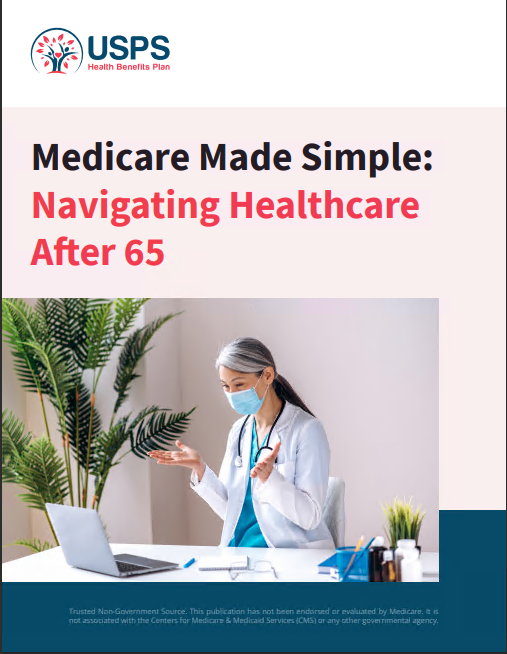Key Takeaways
-
The new Medicare-integrated prescription drug benefit under the Postal Service Health Benefits (PSHB) Program significantly changes how USPS retirees and employees manage medication costs in 2025.
-
Understanding eligibility, enrollment, and the consequences of opting out is essential to ensure uninterrupted access and avoid unexpected gaps in drug coverage.
Why Prescription Drug Coverage Matters More in 2025
If you’re a USPS retiree or about to retire, 2025 marks a major change in how your prescription drug benefits work. With the launch of the Postal Service Health Benefits (PSHB) Program, your drug coverage is now more closely tied to Medicare Part D than ever before.
This isn’t just a routine update—it changes how your medications are covered, what you pay out-of-pocket, and what happens if you miss an enrollment deadline. Let’s break it all down so you know exactly what to expect and how to protect your access to essential medications.
What’s New Under the PSHB Program
As of January 1, 2025, all USPS annuitants and family members who are entitled to Medicare must enroll in a PSHB plan to maintain coverage. This transition from the Federal Employees Health Benefits (FEHB) Program includes a major shift in how your prescription drugs are covered.
Here’s what’s changing:
-
Integration with Medicare Part D: Your PSHB plan now works with a Medicare Part D Employer Group Waiver Plan (EGWP). This means your drug benefits coordinate with Medicare to reduce out-of-pocket costs.
-
Automatic Enrollment: If you’re enrolled in both Medicare Parts A and B and a PSHB plan, you are automatically enrolled in the Medicare Part D EGWP for drug coverage.
-
$2,000 Out-of-Pocket Cap: Starting in 2025, the Part D benefit now includes an annual out-of-pocket maximum of $2,000 for covered drugs, offering critical financial relief.
Who Must Enroll and Why It Matters
Enrollment in the Medicare Part D EGWP under PSHB is required if:
-
You are entitled to Medicare Part A AND enrolled in Part B
-
You are covered under a PSHB plan as an annuitant or family member
If you meet both criteria, you must remain enrolled in the Part D EGWP unless you qualify for an exemption.
Exemptions from Mandatory Enrollment
You may be exempt from enrolling in the Medicare drug plan if:
-
You retired on or before January 1, 2025, and are not enrolled in Medicare Part B
-
You live outside the U.S. and U.S. territories
-
You are eligible for prescription coverage through the VA or Indian Health Service
What Happens If You Opt Out
If you choose to opt out of the Medicare Part D drug plan through PSHB:
-
You will lose all prescription drug coverage under your PSHB plan.
-
You will not be allowed to re-enroll in the Part D EGWP until the next Open Season.
-
Your access to prescription medications may be significantly limited, and you could pay the full retail price.
This opt-out decision should never be taken lightly. Unless you qualify for an exemption, it’s in your best interest to remain enrolled to avoid losing coverage.
Key Features of the 2025 Drug Benefit
The 2025 Medicare-integrated drug benefit under PSHB offers several new advantages designed to reduce costs and improve access:
-
$35 Insulin Cap: All covered insulin products are capped at $35 per month, without applying toward your deductible.
-
Expanded Pharmacy Network: You can fill prescriptions at more retail locations and mail-order pharmacies nationwide.
-
Cost Protections After the Cap: Once you reach $2,000 in out-of-pocket costs, you pay nothing more for covered drugs for the rest of the calendar year.
These features work together to create a more stable and affordable experience for USPS retirees.
Enrollment Timing and Deadlines
Timing is everything. Missing deadlines can result in lapses or permanent loss of drug coverage. Here’s what you need to know:
-
Special Enrollment Period (SEP) for Medicare Part B ran from April 1 to September 30, 2024, specifically for USPS annuitants affected by the PSHB transition.
-
PSHB Open Season occurred from November to December 2024. This was your chance to choose or change your PSHB plan.
-
Coverage Took Effect on January 1, 2025, for those who made elections during Open Season.
If you didn’t take action during these windows, you may have limited options until the next Open Season or a qualifying life event.
Coordination Between Medicare and PSHB
Your PSHB plan now works hand-in-hand with Medicare Part D. Here’s how coordination functions in 2025:
-
Primary Payer: Medicare Part D pays first for your prescription drug costs.
-
Secondary Coverage: Your PSHB plan covers additional expenses not fully paid by Medicare.
-
Streamlined Billing: Most of the time, you’ll pay one copay or coinsurance at the pharmacy—no complex reimbursements.
This dual-layer setup helps reduce your personal costs and simplifies your experience.
Understanding Cost Sharing
You may be wondering what you actually pay. While costs vary by plan, here’s a general breakdown of what to expect:
-
Deductibles: Some plans require a deductible before drug benefits begin, up to the $590 maximum allowed by Medicare in 2025.
-
Copayments and Coinsurance: Once your deductible is met, you’ll pay a flat fee or a percentage of the drug cost.
-
Out-of-Pocket Maximum: After you hit the $2,000 threshold, you owe nothing more for covered drugs in that year.
Keep in mind that these costs only apply to covered medications and may differ based on your specific PSHB plan.
How to Get the Most from Your Coverage
To make the most of your drug benefits in 2025, consider the following strategies:
-
Use Generic Drugs When Possible: These typically cost less and are just as effective.
-
Choose Preferred Pharmacies: Some plans offer lower costs if you use designated pharmacy networks.
-
Review the Plan’s Formulary: Ensure your medications are listed to avoid unexpected charges.
-
Monitor Out-of-Pocket Spending: Track how close you are to the $2,000 cap so you can plan your finances.
Staying informed allows you to take full advantage of the cost protections built into the new program.
Re-Evaluating Your Plan Each Year
Annual Open Season occurs every November to December, giving you the chance to re-evaluate your coverage. It’s important to:
-
Compare PSHB plans if your medication needs change
-
Review the Annual Notice of Changes from your current plan
-
Assess whether your pharmacy network or drug formulary has been updated
Changes in your health or prescription needs could make another plan more suitable for the following year.
What USPS Employees Nearing Retirement Need to Know
If you’re a current USPS employee approaching retirement, understanding this prescription benefit is just as important:
-
When you retire and become eligible for Medicare, you’ll be required to enroll in Part B and a PSHB plan to keep drug coverage.
-
Planning for this ahead of your retirement date helps prevent any disruption in medication access.
-
You’ll be automatically enrolled in the drug plan through your PSHB coverage if you meet the Medicare criteria.
Knowing the rules early helps you make a smooth transition from active employment to annuitant status.
Why This Benefit Is a Financial Safety Net
Prescription drugs can become one of the highest health-related expenses in retirement. The integration of Medicare Part D with your PSHB plan addresses that head-on:
-
Caps and copay limits provide predictability.
-
Automatic enrollment prevents accidental loss of drug coverage.
-
Coordination between Medicare and PSHB reduces financial stress.
This new structure is designed to protect your health—and your wallet.
Be Prepared and Informed
The prescription drug changes for USPS retirees in 2025 are significant, but they don’t have to be confusing. By understanding how the Medicare Part D EGWP works within your PSHB plan, you put yourself in a better position to maintain access to vital medications.
Take time each year to review your plan and make sure it still fits your needs. When in doubt, professional guidance can help ensure you make the right choices.
Talk to Someone Who Can Help
To protect your drug benefits under PSHB, make sure you stay enrolled in the Medicare drug plan if you’re eligible, review your coverage annually, and take full advantage of the cost protections now available. If you have questions about enrollment or plan coordination, speak to a licensed agent listed on this website for clear answers and professional advice.











